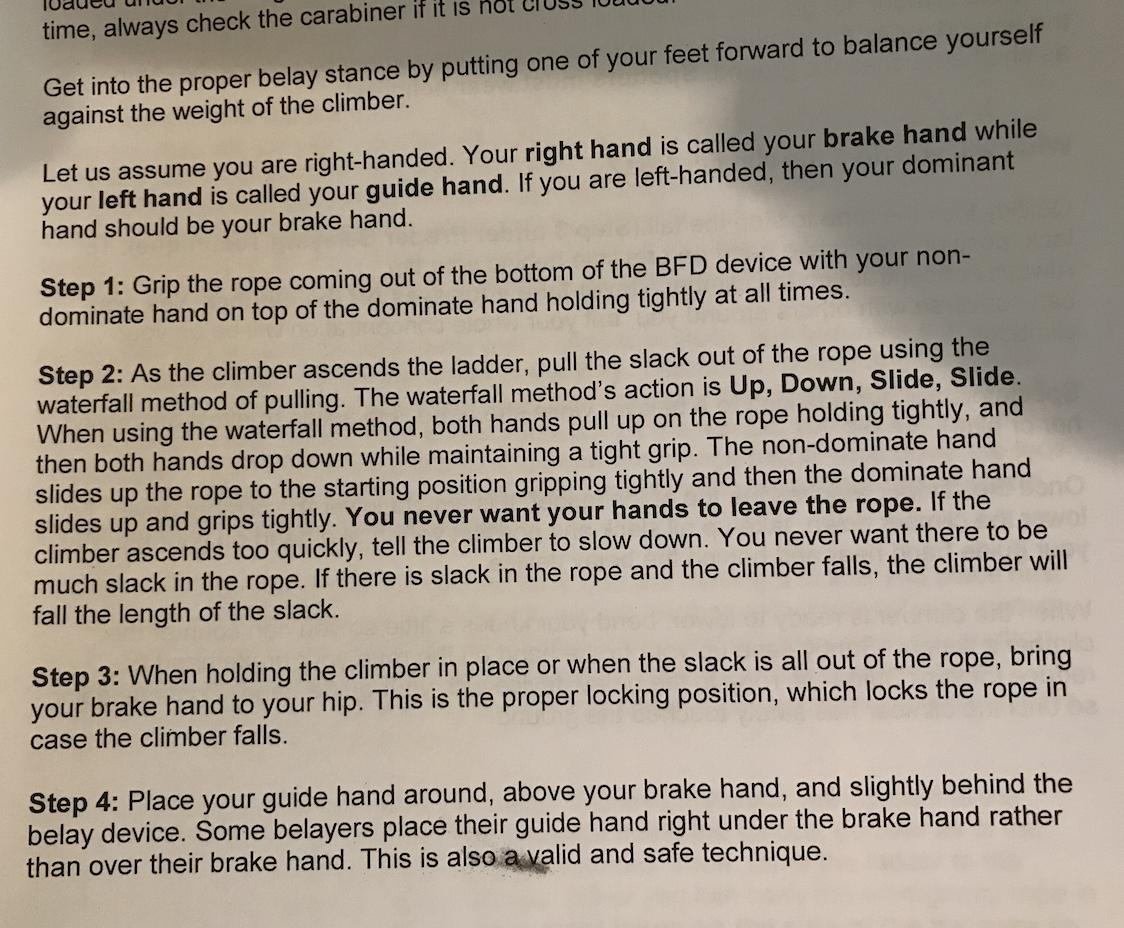You were probably taught the "Waterfall Method" or "Up-Down-Slide-Slide".
There are examples in https://www.youtube.com/watch?v=B87LNEMW370 and https://www.youtube.com/watch?v=5egJuxizA2k
Just this year I was re-trained in this method at a youth program camp. Here's the description in the text they gave us:
It is a very secure method, in that the brake hands never come off the rope, but it isn't as efficient as the Pull-Brake-Under-Slide method (What are the steps in the PBUS method of belaying?), especially with higher friction systems. I believe the youth group chose this method for it's reliability and simplicity, especially for consistency in training a more casual pool of adult volunteers with its own non-AMGA-certified adult volunteer trainers.
Your gym (or your adventure camp) can set its own house rules, and standardize on the more efficient Pull-Brake-Under-Slide system, and has to do some level of diligence in enforcing its guidelines.
Where the differences between the Waterfall Method the PBUS Method might come into view is in managing slack and friction -- the Waterfall Method doesn't have a mechanism for giving slack without the climber pulling it for themselves, while the PBUS method can use the guide hand to pull the rope back out of the device. For friction, the PBUS method allows you to use the guide hand to feed the rope into the device and untangle curls, or to maneuver the rope out of the way of the climber. Strict adherence to the Waterfall method doesn't permit those manipulations. Where it the waterfall method might be unsafe is in situations with excess slack or twists in the climber's rope, where one might attempt to use a guide hand, and not keep a positively clamped-on brake hand, as the PBUS method emphasizes. The two-hands-below-the-ATC Waterfall method is secure for what it does, but doesn't give good guidance for some common scenarios. As soon as you consider how to safely handle giving slack, handling twists, or several other common situations, the Waterfall method degenerates into one stage of the more versatile PBUS method.
If you know PBUS, you can do Waterfall, but if you are trained in only Waterfall, you may not be able to give slack or lower as safely as you can with PBUS.
My youth program (and also my climbing gym for after-midnight programs) requires backup belayers, and half-heartedly trains backup belayers to use a hip belay. For a hip belay, rather than a friction-plate device, the older Slip-Slide-Slap belay method (Correct and incorrect slip-slap-slide belay technique) works well for managing the rope.
